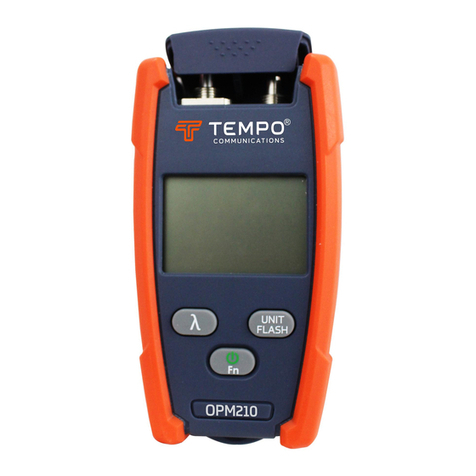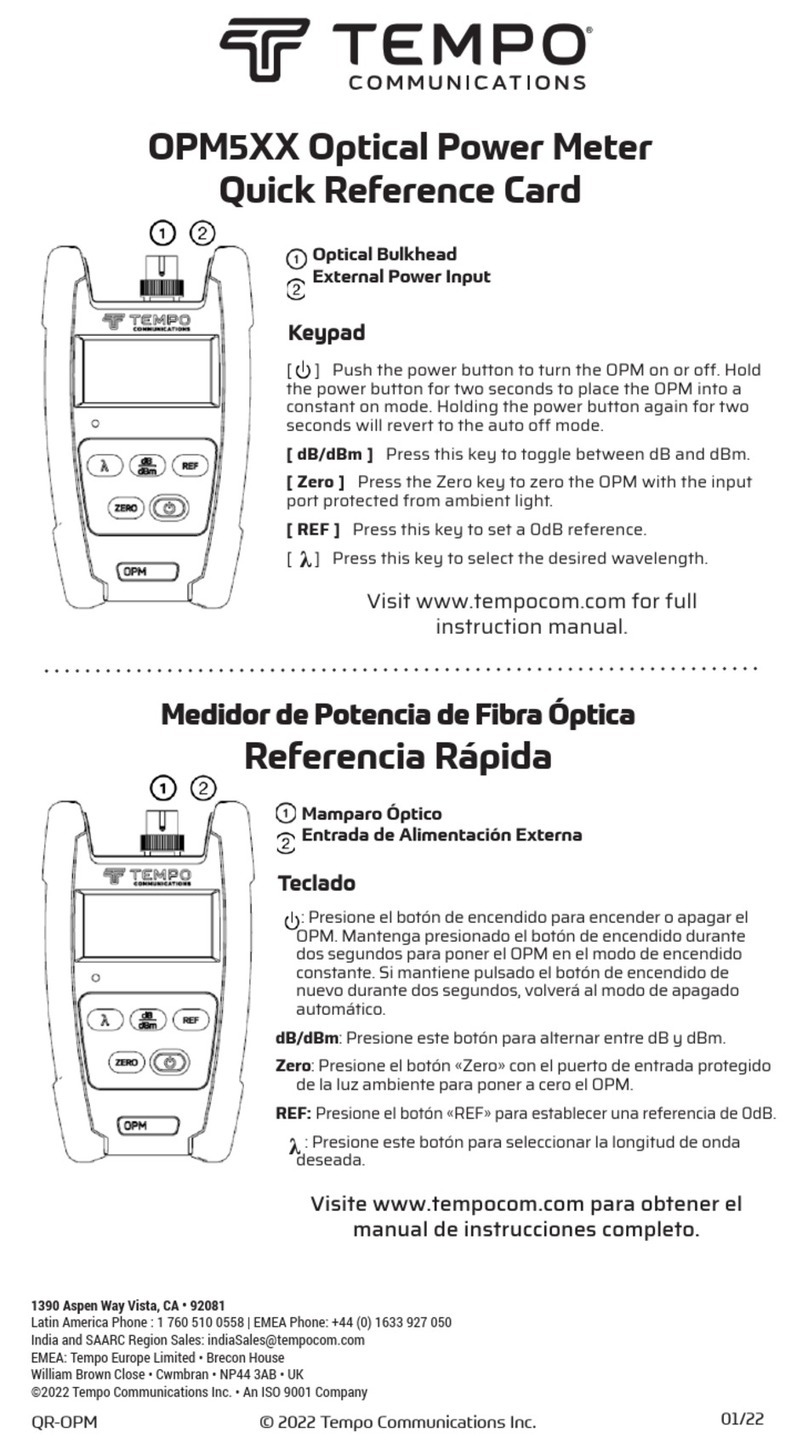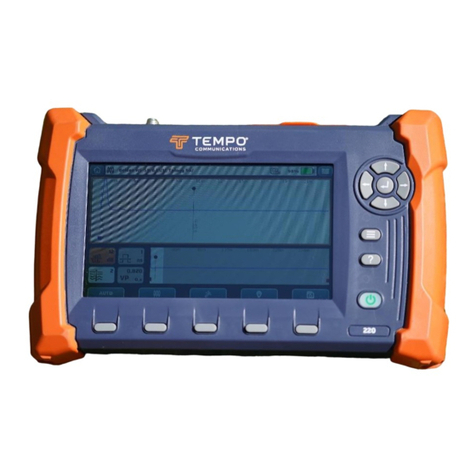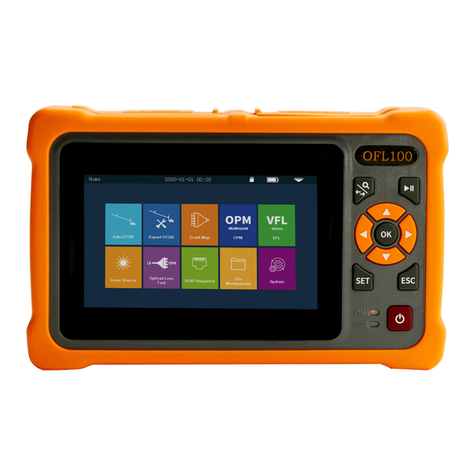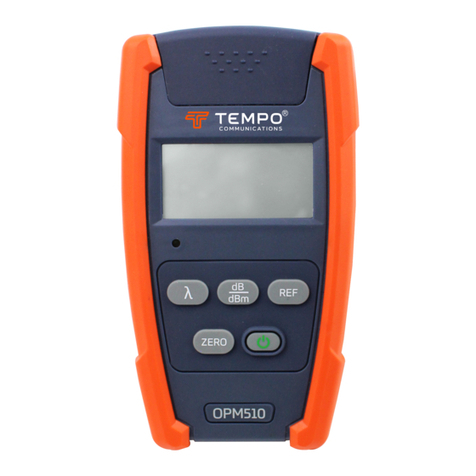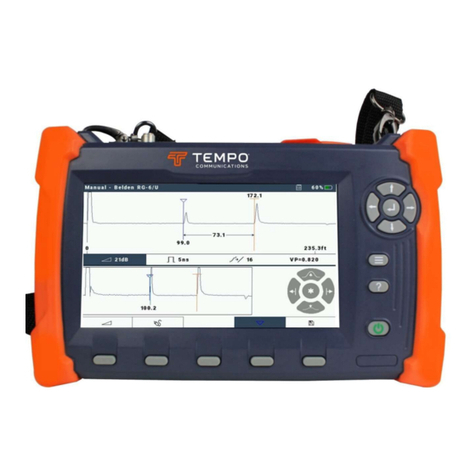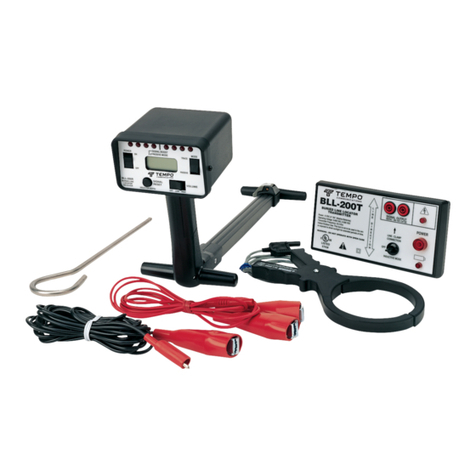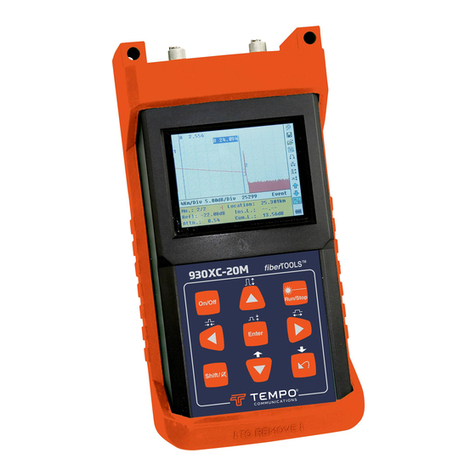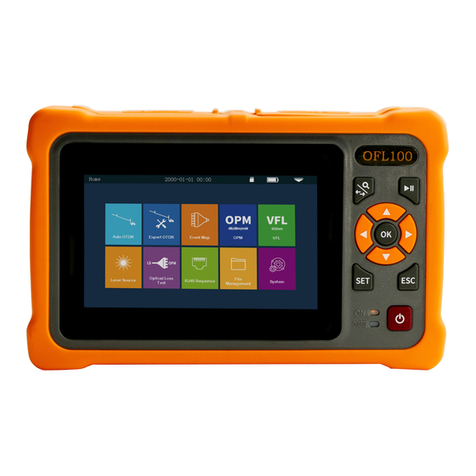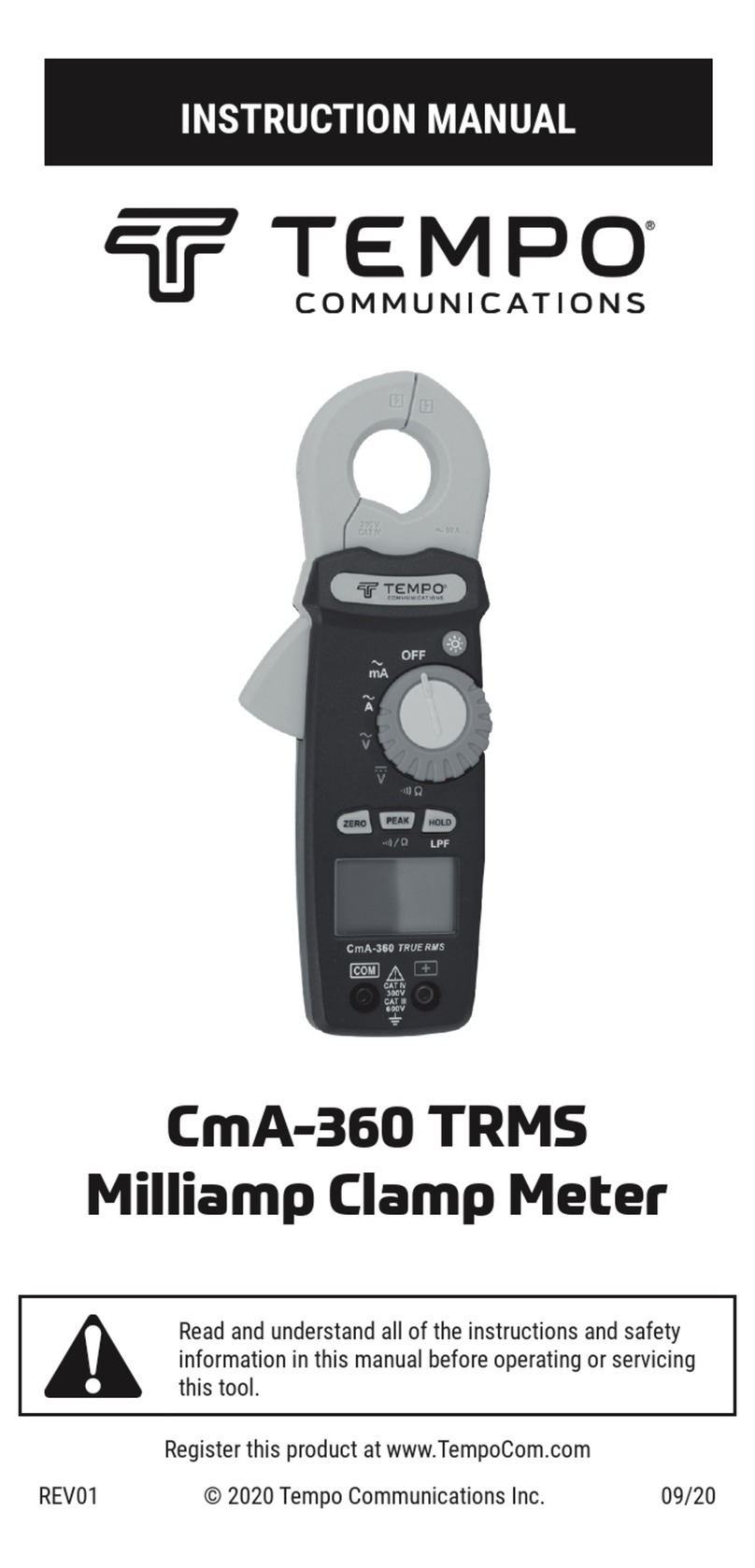
OFL100
Tempo Communications Inc. 1390 Aspen Way • Vista, CA 92081 USA • 800-642-2155
2
Table of Contents
Preface 3
Description ............................................................................................................................................................ 3
Safety....................................................................................................................................................................... 3
Purpose of This Manual ................................................................................................................................. 3
Warranty................................................................................................................................................................. 3
Important Safety Information 4
Section 1. Introduction 7
Section 2. Basic OTDR Information 8
Principle of OTDRs ............................................................................................................................................ 8
....................................................................................... 8
Section 3. OFL100 Operation 8
Host .......................................................................................................................................................................... 8
Function Keys ...................................................................................................................................................... 9
Main Interface...................................................................................................................................................... 9
Auto OTDR ..........................................................................................................................................................10
Expert OTDR ......................................................................................................................................................10
Parameter Settings..........................................................................................................................................11
OFL100 Pulsewidth Selection .....................................................................................................................11
Threshold/Criterion ........................................................................................................................................12
Threshold Settings................................................................................................................................ 12
Eligibility Criteria ..................................................................................................................................... 12
OFL Trace .............................................................................................................................................................12
OTDR File Saving.............................................................................................................................................. 13
File Operation.....................................................................................................................................................13
Event Map............................................................................................................................................................14
OPM ........................................................................................................................................................................14
VFL ..........................................................................................................................................................................14
Laser Source....................................................................................................................................................... 15
Optical Loss Test.............................................................................................................................................. 15
System Settings ............................................................................................................................................... 15
Section 4. OFL100 Troubleshooting 16
Section 5. Trace Viewer 17
